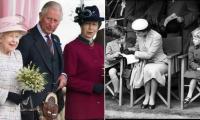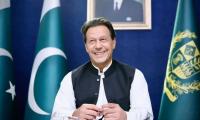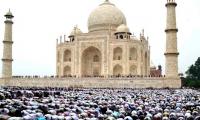There are not many bookshops in Skardu, but whenever I happen to be there my friend, Aziz Ali Dad, takes me to Soday Books – a compact and fine place to brows books on topics ranging from the history of Gilgit-Baltistan to the ethnic and religious composition of that region.
On one of my visits there I chanced upon an Urdu book titled ‘Tareekh-e-Tashayyu’. It turned out to be an Urdu translation of ‘The Origin and Early Development of Shi’a Islam’ by Syed Husain Mohammad Jafri translated by Syed Muslim Abbas Jafri. I had this book in English but didn’t know it had been translated so lucidly into Urdu.
With the death of Husain Mohammad Jafri on January 20 in Karachi at the age of 84, Pakistan has lost a scholar of international repute whose books have been translated into many languages. There are not many historians in Pakistan who managed to obtain two doctoral degrees in history. His first PhD was from the University of Lucknow, and the other from the University of London. He was the founding director of the Pakistan Study Centre at the University of Karachi from where he retired in 1998.
He also served at the University of Malaya, Kuala Lumpur; the American University of Beirut; and the Australian National University, Canberra. Subsequently he became a full professor at the Aga Khan University, Karachi, where he held the Chair of Islamic/ Pakistan Studies. One of his most important works is ‘The Origins and Early Development of Shi’a Islam’ that acquired the status of a masterpiece right from its first publication by the American University of Beirut in the 1970s.
In Pakistan, we have a tendency to ignore our own scholars and give more value to foreigners even if their scholarship is questionable or biased. Bernard Lewis who wrote dozens of books on Islam is a case in point. His scholarship was tainted by his own biases and he gave his own version of history that cannot be called objective and dispassionate. Similarly, Karen Armstrong has learnt a trick or two to endear herself with Muslim audiences by writing books that do not annoy anyone, especially Muslims.
When we want to learn the history of early Islam, we pay more attention to Lesley Hazleton and Wilferd Madelung, whose books ‘After the Prophet’ and ‘The Succession to Muhammad ‘are good but mostly deal with the early caliphate. In comparison, Jafri’s ‘The Origins and Early Development of Shi’a Islam’ is a much more detailed account of this topic. Despite being Shia himself, Jafri himself was Shia, but his books and other writings remained free of any bias, and tried to give you an accurate picture of how early differences of opinion emerged within Islam.
The only other book in Urdu that can be recommended is Maulana Maududi’s ‘Khilafat o Malukiat’ (‘Caliphate and Kingdom’). It describes and explains in detail how, during the early decades of the Muslim state, the question of succession was dealt with, and how during the third caliph’s reign tragic trouble brewed in and around Medina. Maulana Maududi’s book is a must-read for anyone interested in early Islam, and so is Jafri’s book for anyone who wants to understand how the concept of Imamate developed within Shia Islam.
Jafri’s book is replete with original quotations from both Shia and Sunni sources and is objective analysis. Just like any good historian, Jafri discusses events not only with their religious significance but also gives a detailed account of the economic, ethnic, political, psychological, social, and tribal currents underplay at that time. For example, the fifth chapter in the book is about Kufa and gives such a marvellous description and explanation of the city itself, right from its founding in 638 AD after the conquest of the Persian Empire during the reign of the second caliph.
Jafri gives details of how the site for the new city was selected so that Arab armies could be stationed there to consolidate their power in the region. So initially it was to serve as a garrison city that hosted an army that was heterogeneous in tribal composition but was broadly divided into the categories of Nizari (North Arabs) and Yemeni (South Arabs). Within these two categories there were more than half a dozen sub-categories based on ancient genealogical groupings. So the pre-Islamic divisions continued in one way or the other.
The role that the people of Kufa played in early Islamic history has a lot to do with the arrangements various caliphs and governors tried to apply there. According to Jafri’s research, the Arab element in Kufa was extremely complex in its composition – more so than in any other Arab city. For example, there was a small number of Quraysh from the Hijaz; there were nomadic and semi-nomadic elements coming from the north and east of Arabia; then there were South Arabian elements coming from Hadramawt and Yemen. There were also some Christian tribes; and finally there were Persians who had embraced Islam.
Jafri notes that the Persians in Kufa were not granted equal status by their Arab co-citizens in the social system of the city. They were called ‘mawali’ or clients, a term to indicate inferior social standing. The mawali played an important role in Kufan religio-political history. Though the term ‘mawali’ was originally meant for freed slaves after the Muslim conquest, it was extended to a variety of non-Arab peoples. Jafri gives a detailed account of Kufa’s socio-economic structure that played out such a significant role in the first 50 years of Islamic history, especially after the capital was moved from Medina to Kufa by the fourth caliph.
Of course, there are other more detailed original books about that period such as ‘Kitab al-Milal wa’l-Nihal’ – the section on Muslim sects and divisions – by Shahrastani (1076 – 1153) translated into English by Kazi and Flynn. Then there is ‘Al Mazahib al Islamia’ by Abu Zahra Misri, translated into Urdu as ‘Islami Mazahib’ by Ghulam Ahmad Hariri. But the book by Jafri is much more focused and draws from hundreds of sources in Arabic and Persian. Muslim Abbas Zaidi who translated it into Urdu was himself a professor of English with three Master’s degrees to his credit.
One reason why religious and sectarian prejudice has spread in Pakistan is that we don’t read about religions and sects other than our own. Either we don’t read at all, or if we do most of our reading just reinforces our earlier thoughts that justify what we believe in. Then there are so-called liberal, progressive, and secular-minded people who consider it a waste of time to read about religion. These tendencies have done tremendous harm to our social fabric and have prevented us from understanding what is going on in society.
The key is to read with an open mind and an objective eye. Reading from diverse sources is likely to expand our horizon and we may become more tolerant of others’ views. Religion and sects cannot be discounted from our lives, not at least in the near future. Reading scriptures with translations opens our eyes and many of our misconception are corrected. Similarly, reading original sources as well as their commentaries and annotated explanations helps us grasp the intricacies of religions and sects. And this is useful, for better comprehension can lead us to improved agreements or disagreements with others.
The writer holds a PhD from the University of Birmingham, UK and works in Islamabad.
Email: mnazir1964@yahoo.co.uk
Critics argue that strategy is vague, but closer look indicates strategic alignment with global trends and national...
To defeat it, we must distrust bot-driven narratives, to defeat it, we must verify sources before believing or sharing
Too often in emerging markets, digital innovation is treated as standalone goal, with risk relegated to afterthought
As in Pakistan lawfare’s impact and prevalence are increasing, situation is turning murkier
Number of traditions are associated with Eid, such as new clothes and giving and receiving of cash gifts as Eidi
Internationally, there have been misleading theories propounded about so-called slowing of Chinese economy







